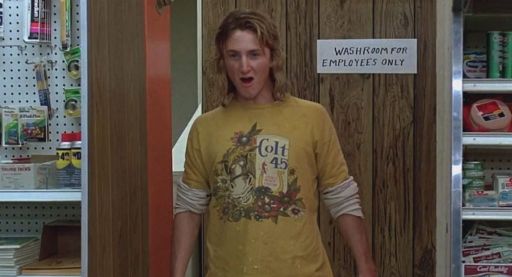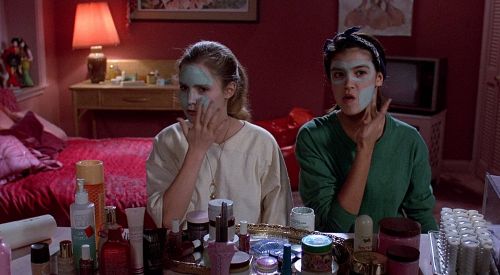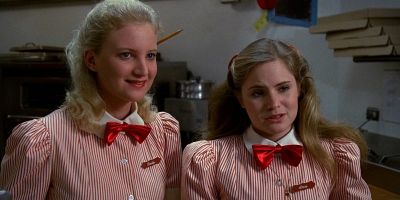Fast Times at Ridgemont High, directed by Amy Heckerling, is a coming-of-age comedy that explores the lives of Southern California high school students, focusing on their transition through puberty, romances, and part-time jobs. The 1982 movie stars a talented cast led by Jennifer Jason Leigh as Stacy Hamilton, a young girl on a quest for self-discovery; Sean Penn as Jeff Spicoli, a legendary surfer; Judge Reinhold as Brad Hamilton, Stacy’s older brother; and Phoebe Cates as Linda Barrett, Stacy’s wise friend. It naturally raises questions about how much of “Fast Times at Ridgemont High” is based on actual events given its iconic sequences, enduring characters, and 80s-inspired soundtrack.
Is Fast Times at Ridgemont High a True Story?
A actual story served as the inspiration for some of “Fast Times at Ridgemont High.” The story was adapted from Cameron Crowe’s 1981 book of the same name, for which he also wrote the screenplay. In an audacious move, Crowe, who had graduated from high school in 1972 and was then 22 years old, pretended to be Dave Cameron, a high school student, while conducting research for the book at Clairemont High School in San Diego, California. He wanted to create a true representation of adolescent life in the late 1970s and early 1980s. His goal was to capture an accurate picture of teen dynamics at the time. His book, which later served as the basis for the movie, was formed by the knowledge and experiences he gained throughout this time.
Crowe described his unusual undercover experience in an interview with The Washington Post, saying, “It was like the senior year I never had. Actually, a different novel about me travelling back to relive a small portion of my adolescence was already in the works before I started to blend in with the students and become friends with them. As he noted, “I figured I could do kids a service because so much about them is written at arm’s length. He also highlighted the frequently mistaken picture of youth. The most of the time, it’s kids like Brenda Spencer who shot six people out of boredom, the angel dust instances, or Why Johnny Can’t Read who garner the most attention.
In addition, he said, “I thought these kids were a lot smarter than they were being given credit for.” The inner anguish in the pupils’ lives was made apparent via Crowe’s contact with them, and this served as a major inspiration for his writing. Furthermore, Crowe purposefully selected the characters in his narrative to resemble stereotypes because he thought that these archetypes predominated in high school. The movie, which was filmed in California, provides a vivid portrait of adolescent life by focusing on the highs and lows of new relationships, the significance of friendships, the difficulties of finding work, and the pressures of school.
Despite being a fictional portrayal, the environment, culture, and relationships of Clairemont High School in San Diego are prominently referenced in the movie’s setting, Ridgemont High. The characters capture the spirit and substance of the students Crowe met with, even though they are not exact representations of real people. Even if “Fast Times at Ridgemont High” is inspired by actual events, it’s important to acknowledge the artistic licence taken. The movie combines a number of real-life people into a single character to produce an interesting and sympathetic story. The movie is kept interesting while also resonating with sincerity because to this combination.
For instance, Crowe drew inspiration for Stacy Hamilton’s character from a number of the young people she encountered, depicting the common struggles faced by teenage girls of the time. One of the movie’s notable characters was Sean Penn’s portrayal of Jeff Spicoli. Like other characters, Spicoli was portrayed as a composite of many people, representing the mood of the time. The book offers a more intricate look at adolescent life, underlining things that may be too subdued for cinema, while the movie simplifies and emphasises specific moments for cinematic allure.
The complexity of adapting a lengthy story into a full-length feature is highlighted by the fact that some characters and situations are more intense or amalgamated in the movie than they are in the book. However, the literary and cinematic versions are harmoniously entwined: the book provides a vast backdrop, while the movie brings the central story to life with its iconic performances and sequences.
The movie is a true depiction of its time even if it does not directly recount real-life events. Instead, it draws heavily on real-life experiences. The movie deftly blends fantasy and truth, giving audiences an endearing and nostalgic trip through the past. Fast Times at Ridgemont High, a timeless masterpiece that continues to enthral viewers today, clearly leverages real life events to improve its fictional plot.




